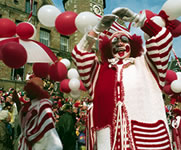Other highlights
Contact
Münster Marketing
Heinrich-Brüning-Strasse 9
48143 Münster
Email:
[email protected]
Internet:
www.tourismus.muenster.de
Heinrich-Brüning-Strasse 9
48143 Münster
Email:
[email protected]
Internet:
www.tourismus.muenster.de
Contact
German Convention Bureau
Münchener Straße 48
60329 Frankfurt am Main
Email:
[email protected]
Internet:
www.gcb.de
Münchener Straße 48
60329 Frankfurt am Main
Email:
[email protected]
Internet:
www.gcb.de
Museums

The Leprosy Museum is located in Kinderhaus, just outside Münster. It is Germany's only museum documenting the history of the disease, how it is spread, and how it can be fought. Leprosy is one of the oldest and most horrendous afflictions known to man. With more than one million sufferers, mainly in Africa, Asia and Latin America, it remains a significant global health problem. The museum, itself a former leper house, is a window into the history of the disease in Münster. Alongside the exhibitions, you can see the workhouse, the provisor's house, the surrounding wall with hatch and the specially built Lazarus house, which contains stone sculptures of Lazarus, Gertrude of Nivelles (the patron saint of leprosy) and the Church of Saint Joseph. Only open on Sundays or by appointment, guided tours.
» www.lepramuseum.de
The Museum of Lacquer Art was established by BASF Coatings AG in 1993. Housed in Münster's Gerling Villa, this unique collection boasts around 1,000 exhibits from more than two millennia, including works from East Asia, Europe and the Islamic World. The oldest items originate from China and Korea, where resin from the indigenous lacquer tree was used for decorative purposes as early as the 4th and 5th century BC. Later works on display include pieces from the 14th and 15th century AD. The museum also documents how the art form spread across the globe, with evidence provided by exhibits from 15th century Persia, which found their way to Europe via the Middle East. Closed on Mondays, guided tours available.
» www.museum-fuer-lackkunst.de
Opened in 1979, the Bible Museum displays over 500 items documenting the Word of God down the ages, including original manuscripts and translations. Covering an area of 200m², the museum is part of Münster's acclaimed Institute for New Testament Textual Research. Highlights include the Greek New Testament in manuscript and printed form from the 16th century to the present day, manuscripts and printed versions of the Bible in Latin, the Bible in German (focusing on the translations by Luther), modern editions, illustrations and an accurate replica of the Gutenberg printing press. Closed on Mondays, Sundays and public holidays. Guided tours on request.
» www.uni-muenster.de/bibelmuseum
The Museum of Natural History in Münster, which covers an area of approx. 4,000m², offers an insight into the world of stars, dinosaurs, Native Americans, mammoths, mammoth hunters and the history of mankind. Experience "heaven on earth" and travel back in time to the Mesozoic era in the blink of an eye. You'd better not be scared of big animals if you want to see the giant dinosaurs on display, including the 16-metre-long skeleton of a Tyrannosaurus rex and the remains of dinosaurs that lived here 100 million years ago. In addition to important fossil finds, the museum also houses a number of impressive special exhibitions. The museum's planetarium takes visitors on a journey to the stars with a beautiful simulation of the night sky. Closed on Mondays, guided tours on request.
» www.lwl.org
Villa ten Hompel in Münster is a memorial site for crimes committed by police and administrators during the Nazi period. Between 1940 and 1945 this splendid 1920s industrialist's villa was the headquarters of the "order police". Villa ten Hompel is now not only a museum but also a place of remembrance, education and research. Since 2001 it has had a permanent multimedia exhibition about the history of the "order police" between 1924 and 1968 entitled "Acting on orders... police, administration and responsibility". Only decades earlier, decisions were taken in this same building about the persecution of Jews, Sinti and Roma, Social Democrats, Communists, Priests and disabled people. Another exhibition "Atonement as a duty" concentrates (for the first time in the German Federal Republic) on the history of atonement. It also addresses issues such as the responsibility and guilt of "desk criminals" who contributed to mass crimes by carrying out their official duties. Closed on Mondays, guided tours on request.
» www.tourismus.muenster.de
Travel Planner
Select an option...



